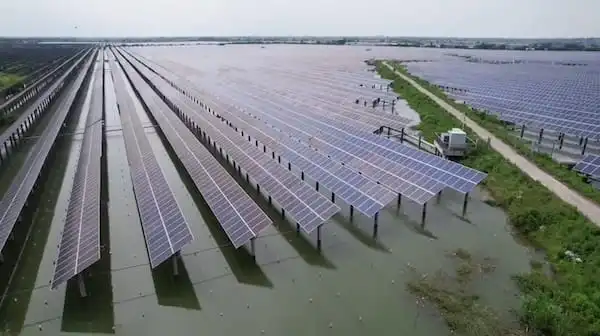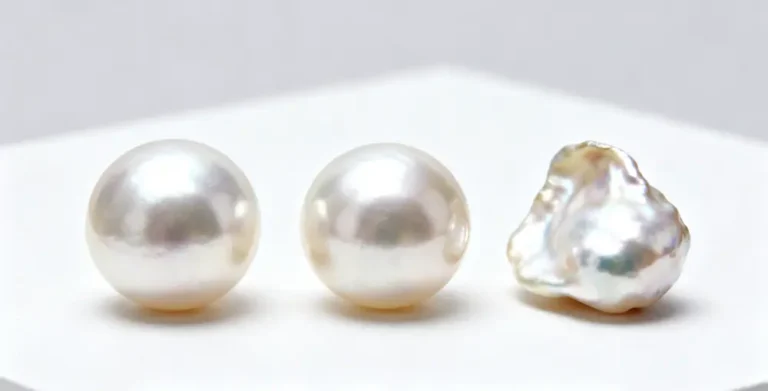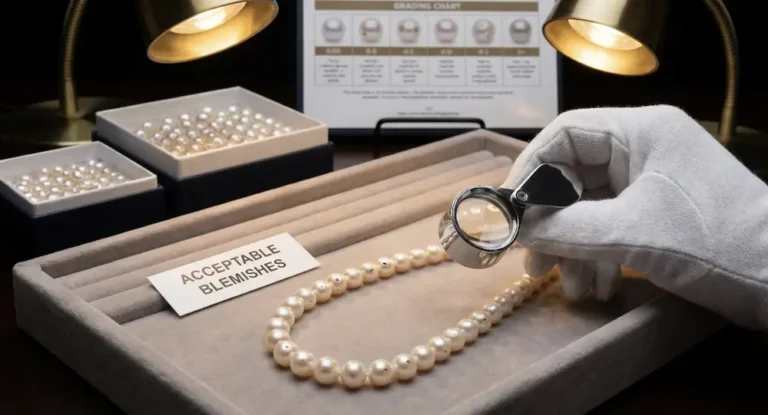For thousands of years, pearls have fascinated us, representing things like honor, wealth, and purity. But the journey a pearl takes, from the bottom of the ocean to becoming a piece of jewelry, is full of history, risks, and changes. In this article, we’re going to dive into the world of pearl divers and pearling itself. We’ll explore why it was so important in the past, how the ways of finding pearls have changed over time, and how modern methods are affecting this ancient trade.

The Origins of Pearl Diving
Pearl diving, or pearling, is a really old job where people collect pearls from wild shellfish, usually oysters or mussels, in the ocean or lakes and rivers. People have been obsessed with pearls since ancient times, seeing them as a sign of importance and beauty. Way back in ancient China, the first pearl hunters used simple methods. They’d tie long ropes around themselves and go down into the water with bamboo baskets to collect oysters. It was dangerous, but that’s what they had to do with the technology they had back then.
1. The Challenges and Dangers of Traditional Pearl Diving:
Traditional pearl diving was definitely not for the easily scared. Pears divers had to be able to hold their breath for a really long time while they searched for pearls way down in the ocean. There were tons of dangers: they could drown if their signal to come up was delayed, they had to deal with freezing water, and there was the risk of running into sharks and other dangerous sea creatures. Back in the colonial days, the dangers of pearl diving often led to slaves being forced to dive in terrible conditions. But sometimes, finding a really big pearl could be their way to freedom.
2. The Evolution of Pearling Techniques:
Modern technology has really changed the pearling industry. Now, pearl farms have mostly taken the place of traditional pearl diving. This change was mostly because of Kōkichi Mikimoto, a Japanese businessman who figured out how to culture pearls. By putting tiny particles into oysters, they could make pearls in a more reliable and sustainable way. While you can still find pearl divers, it’s usually more for tourist shows than as a main way to get pearls.
3. The Decline of Traditional Pearling Luggers:
The change from old-fashioned pearling boats (called luggers) to modern boats is a really significant shift in the industry. As Mark Dodd describes in his book, “The Last Pearling Lugger: A Pearl Diver’s Story,” the life of pearl divers on those boats was adventurous but also super tough. The industry, which used to be full of small businesses and a free-spirited attitude, has shrunk as rules and new technology have become more important. Stories about life on luggers, like the DMCD (a 52-foot boat), remind us of a time that’s now gone.
Environmental and Ethical Considerations
Pearl diving brings up some pretty big ethical and environmental worries. Groups like PETA point out how it harms ocean ecosystems. Taking oysters out of their homes messes up the natural balance. These creatures are actually really important for keeping the ocean healthy. They naturally clean the water, which helps reduce pollution, and they also provide shelter for other sea creatures.
Another point of discussion is how we handle oysters. A lot of people are wondering if what we’re doing is really fair. Some argue that we should be using more humane methods that don’t just see them as things for us to use. This debate is ongoing as people consider the effects on both the environment and what’s ethically right.
4.The Role of Pearl Diving in Modern Culture:
Even though it’s got its problems and raises some tough ethical questions, pearl diving still captivates many people. It’s often painted as this exciting, adventurous pursuit that draws in those looking for a break from the everyday grind. But the truth is, it involves incredibly tough conditions and a lot of danger. If the pearl diving industry wants to stick around, it’s going to have to get creative and find new ways of doing things that respect both its history and the critical need to protect the environment and be sustainable.
The Future of Pearling
The story of pearl divers and pearling is really a story of human cleverness and toughness. From its simple start to the modern, advanced pearl farms we have now, the industry has changed a lot. Looking ahead, it’s really important that we focus on ways to do things that are sustainable, respecting both the environment and the traditions of pearling. If we do that, we can make sure that the beauty and appeal of pearls continue to shine for many years to come.
Call to Action
If you’re curious to learn more about the captivating history of pearl diving or want to check out sustainably sourced pearls, be sure to visit reliable sources and support pearl farms that do things ethically. Share this article to help others understand why it’s important to protect this unique part of our history and culture.

By creating a well-researched and interesting piece, this article intends to educate readers about the ins and outs of pearl diving and pearling. It’s also designed to be easily found online, so it can reach as many people as possible.








One Comment